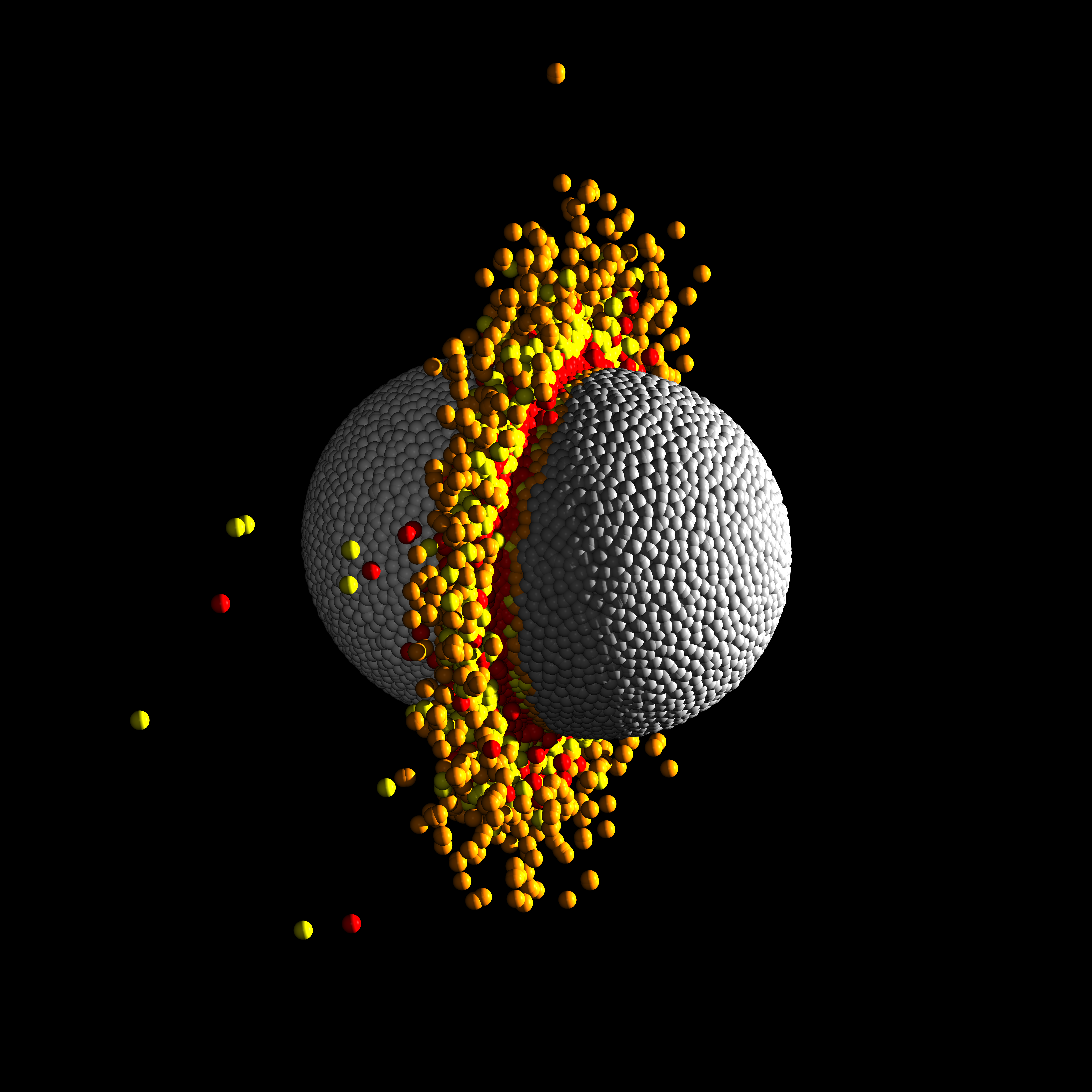Collision the cause of unusual mass distribution in Kepler-107 system
In a paper in Nature Astronomy Letters of 4 February 2019 main author Aldo Bonomo and a.o. several SAC related researchers explain the possible relation between the Super-Earth exoplanets K-107c and K107b.

An enormous exoplanetary collision may be the cause of the unusual mass distribution in the Kepler-107 system. Kepler-107b seems to be a quite ordinary rocky planet orbiting the Solar-like K-107 in just 3,1 days. Its twin in size Kepler-107c is further out, but still close with a 'year' of 4,9 days, and then the weird thing: K107c is by far the densest of the two. This seems to be contradictory to current ideas of planetary formation, and as the authors rule out some more obvious explanations like migration, something else must be the cause. This something else may be that Kepler-107c is the remnant of a collision between two large planets, leaving most of the dense metals in the planet that we now see.
A colourful animation of the collision is available on YouTube, and a longer press release in Danish on the subject is here.
